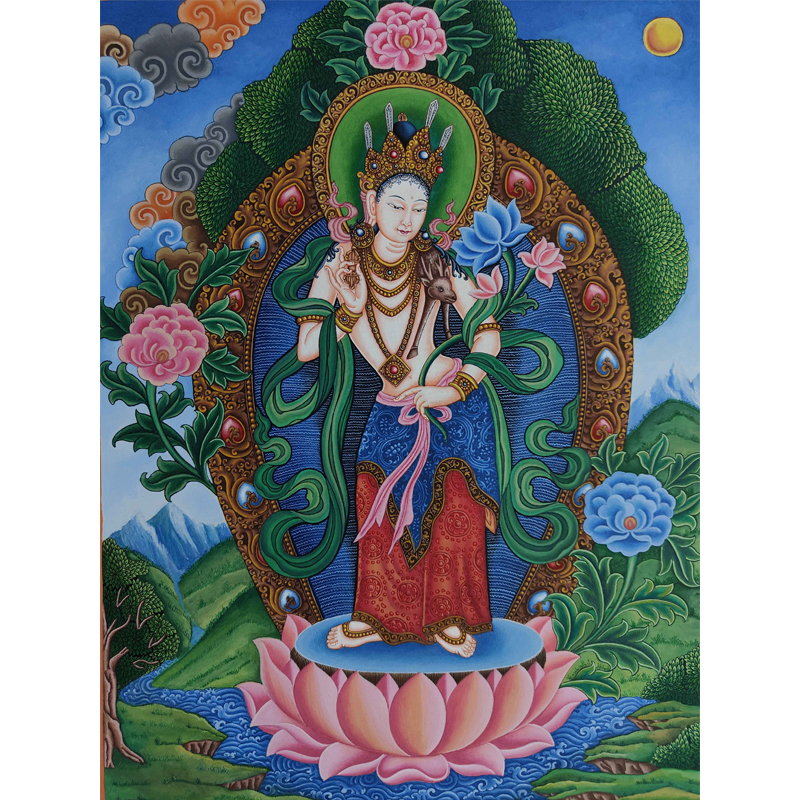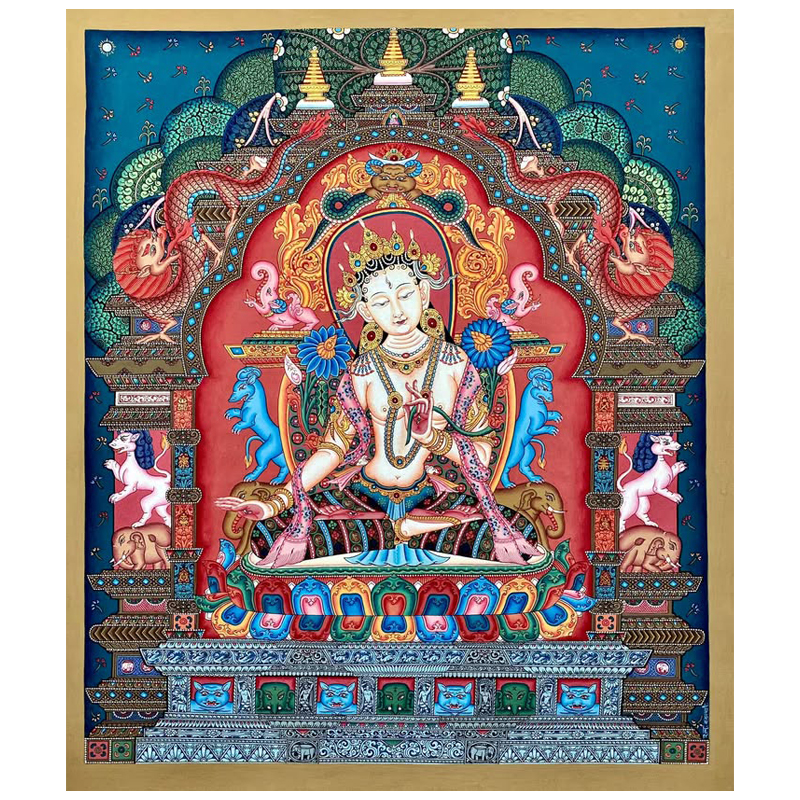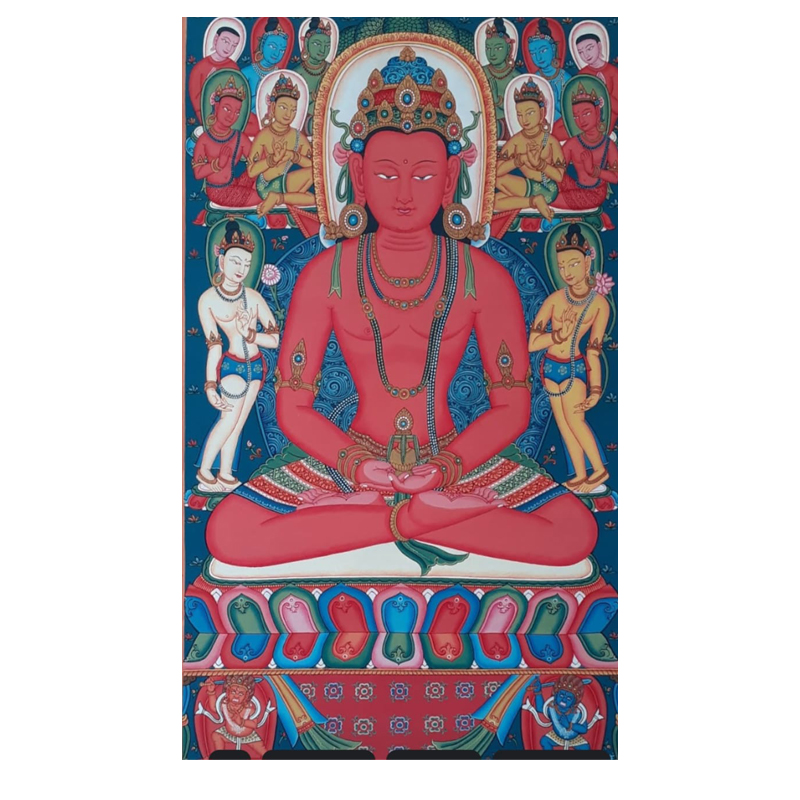

Vajradandha Lokeshwor is a significant figure in Nepali and Tibetan Buddhist iconography, often depicted as a deity who embodies power, protection, and the destruction of evil. He is considered a form of Avalokiteshvara (the Bodhisattva of Compassion) in his wrathful aspect, and his image is typically associated with the protection of Dharma and the destruction of harmful forces.
Vajradandha: The term "Vajradandha" translates to "Thunderbolt Club" or "Vajra-Club," which is the symbolic weapon of this deity. The vajra is a symbol of indestructibility and is often associated with Vajrayana Buddhism. The club (dandha) represents power, strength, and the ability to subdue evil forces.
Lokeshwor: The name "Lokeshwor" means "Lord of the World" and refers to Avalokiteshvara, who is revered as a compassionate protector of beings in Buddhist cosmology.
In iconography, Vajradandha Lokeshwor is often depicted with multiple arms, each holding different ritual objects, including the vajra and a bell. His face is fierce, emphasizing his wrathful aspect, yet his role is to protect and guide sentient beings toward enlightenment, eliminating obstacles and negative influences.
This deity is often worshiped for the purposes of protection, overcoming fear, and enhancing spiritual strength. His image can be found in Thangka paintings, statues, and other religious artworks, particularly in Nepal and Tibet, where Vajrayana Buddhism is practiced.

